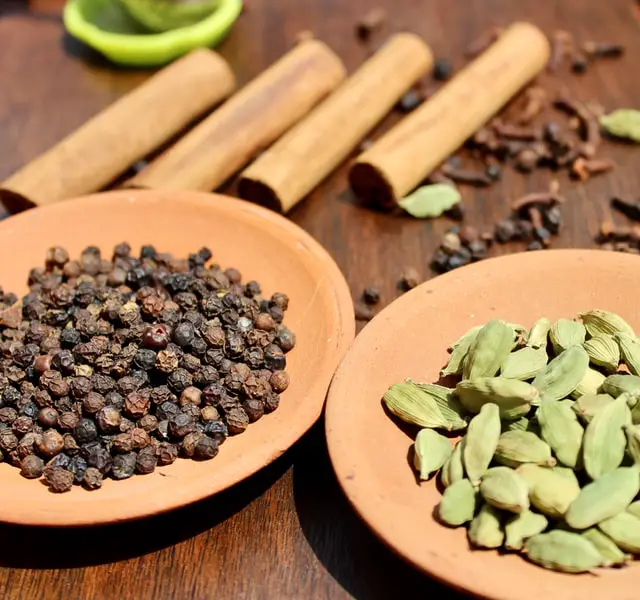Why are bonsai trees so expensive?
There are several reasons why bonsai trees can be expensive:
-
Labor-intensive care: Bonsai trees require regular pruning, shaping, and watering to maintain their small size and unique shape. This requires a lot of time and effort from the grower, which adds to the overall cost.
-
Specialized tools and materials: Bonsai trees require specialized tools and materials such as bonsai pots, wire, and pruning shears. These can be expensive to purchase and maintain.
-
Rare and exotic species: Some bonsai trees are made from rare and exotic species, which can be more expensive to acquire and care for.
-
Age and history: Some bonsai trees are very old and have a long history of care, which can add to their value and price.
-
Artistic value: Bonsai trees are often considered works of art and can be priced accordingly. The skill and talent of the grower can also impact the price of a bonsai tree.
Frequently Asked Questions:
How to take care of a bonsai tree?
-
Water your bonsai tree regularly, making sure to not over-water or allow the soil to become too dry. Use a soil moisture meter to determine the moisture level of the soil before watering.
-
Prune and trim your bonsai tree regularly to maintain its desired shape and size. Use bonsai pruning scissors or a small pair of sharp scissors to carefully remove any excess growth or branches that do not fit the desired shape.
-
Fertilize your bonsai tree every 2-4 weeks during the growing season using a balanced bonsai fertilization mix. Follow the instructions on the fertilization mix for proper dosage and application.
-
Protect your bonsai tree from extreme temperatures, such as hot sun or cold drafts, by placing it in a location with indirect sunlight and proper ventilation.
-
Report your bonsai tree every 2-3 years, using a well-draining bonsai soil mix and a pot that is appropriate for the size of the tree.
-
Keep pests and diseases at bay by regularly inspecting your bonsai tree for any signs of infestation or illness. Use an appropriate pest control solution or natural remedies to treat any problems that arise.
-
Practice proper bonsai tree care techniques, such as wiring and shaping, to maintain the desired form and style of your bonsai tree.
What is a bonsai tree?
A bonsai tree is a miniature tree that is grown and trained to have a small size and specific shape. It is a popular form of horticultural art that originated in Japan and involves pruning and shaping the branches and roots of the tree to achieve a desired aesthetic appearance. Bonsai trees are typically grown in containers and require regular pruning and care to maintain their small size and shape. They can be made from a variety of tree species and can be found in many different shapes and styles, including formal upright, informal upright, slanting, and cascade.
How to grow a bonsai tree?
-
Choose a species of tree that is suitable for bonsai cultivation. Some common bonsai species include juniper, pine, ficus, and elm.
-
Purchase a bonsai tree or start from a seedling or small tree. If starting from a seedling or small tree, choose one that is young and has small leaves and branches.
-
Choose a pot that is appropriate for the size of the tree and has proper drainage holes.
-
Use a well-draining soil mix specifically formulated for bonsai trees. Avoid using regular potting soil as it retains too much water and can lead to root rot.
-
Prune the tree regularly to shape it into the desired form and to maintain its small size. Use sharp pruning scissors or shears to make clean cuts.
-
Water the tree regularly, keeping the soil evenly moist but not waterlogged. Use a watering can or a hose with a fine spray nozzle to avoid damaging the tree.
-
Fertilize the tree every month during the growing season with a balanced fertilizer. Follow the manufacturer’s instructions for the correct dosage and frequency.
-
Repot the tree every 2-3 years, or when the roots become pot-bound. Use a slightly larger pot and fresh soil mix, trimming the roots as needed.
-
Protect the tree from extreme weather conditions and pests. Keep it out of direct sunlight and wind, and use insecticides or pesticides as needed.
-
Regularly trim and shape the tree to maintain its desired form and size. Bonsai trees require frequent care and attention to maintain their shape and size.
How to make a bonsai tree?
-
Choose a tree species that are suitable for bonsai. Some good options include juniper, pine, ficus, and elm.
-
Purchase a young tree or start with a cutting from an existing tree.
-
Plant the tree in a small pot or container with bonsai soil mix.
-
Prune the tree regularly to shape it and encourage growth. Remove any dead or damaged branches and leaves.
-
Use wire to gently bend and shape the branches into the desired shape.
-
Fertilize the tree with a balanced bonsai fertilizer according to the instructions on the package.
-
Water the tree regularly, making sure to never let the soil dry out completely.
-
Repot the tree every few years to refresh the soil and allow for continued growth.
-
Use bonsai techniques such as root pruning and defoliation to further shape and train the tree.
-
Continue to care for and maintain the bonsai tree, pruning, and shaping it as needed to maintain its desired shape and appearance.
Where to buy a bonsai tree?
There are several places where you can purchase a bonsai tree:
-
Nurseries or garden centers: These places usually have a wide variety of plants, including bonsai trees. You can visit a local nursery or garden center and browse their selection.
-
Online retailers: Many websites specialize in selling bonsai trees, such as Bonsai Boy, Bonsai Outlet, and Bonsai Empire. These websites offer a variety of bonsai trees and can ship the tree to you.
-
Bonsai clubs or societies: Many cities have local bonsai clubs or societies that hold regular meetings and sell bonsai trees. You can search online or ask at a local nursery for information on these clubs or societies.
-
Specialty bonsai stores: Some cities have specialty stores that focus solely on bonsai trees. These stores often have a wide variety of trees and can provide helpful advice on care and maintenance.
How to trim a bonsai tree?
-
First, gather your tools including a small pair of scissors or bonsai pruning shears, a pair of tweezers, and a small broom or brush to clean up debris.
-
Begin by trimming off any dead or diseased branches using scissors or pruning shears.
-
Next, prune any branches that are growing too long or are out of proportion with the rest of the tree. Cut these back to a bud or new growth point to encourage branching.
-
Use the tweezers to remove any excess leaves or needles that are overcrowding the tree or are not in proportion with the rest of the foliage.
-
If your bonsai tree has become overgrown or has become too thick, you can thin it out by removing a few branches or leaves. This will help to improve air circulation and allow sunlight to reach the inner parts of the tree.
-
Finally, use the broom or brush to clean up any debris, and make sure to water the tree well after trimming.
How long does it take to grow a bonsai tree?
It depends on the specific type of bonsai tree and the conditions in which it is being grown. Some types of bonsai trees can take several years to mature and reach their desired shape, while others may take only a few months or years. It is important to follow proper care instructions for the specific type of bonsai tree you are growing, including providing adequate sunlight, water, and pruning, to ensure healthy and consistent growth.
How often water the bonsai tree?
Bonsai trees should be watered regularly, but the frequency will depend on the specific type of tree, the size of the pot, and the climate in which the tree is being grown. Some general guidelines for watering bonsai trees include:
- Check the soil moisture level regularly, at least once a day. The soil should be moist but not waterlogged.
- Water the tree thoroughly, until water runs out of the drainage holes in the bottom of the pot.
- Allow the soil to dry out slightly between waterings, but do not let it become bone dry.
- In hot, dry weather, bonsai trees may need to be watered daily. In cooler, more humid weather, they may only need to be watered every few days.
It’s important to monitor your bonsai tree and adjust your watering schedule accordingly, as overwatering or underwatering can lead to problems with the health of the tree.
How to start a bonsai tree?
-
Choose a suitable species of tree for bonsai. Some common types include juniper, pine, and focus.
-
Purchase a young tree or seedling from a nursery or online retailer.
-
Plant the tree in a small pot or container with well-draining soil specifically formulated for bonsai.
-
Prune the tree regularly to shape it and encourage growth in the desired direction. This can be done using bonsai scissors or a sharp knife.
-
Fertilize the tree with a balanced fertilizer every two to four weeks during the growing season.
-
Water the tree regularly, making sure not to let the soil dry out completely.
-
Protect the tree from extreme temperatures and direct sunlight.
-
Repot the tree every two to three years to refresh the soil and allow for continued growth.
-
Continue to prune, fertilize, and care for the tree as needed to maintain its shape and health. With proper care, your bonsai tree can live for many years.
How much is a bonsai tree?
The cost of a bonsai tree can vary greatly depending on several factors such as the species of tree, age of the tree, level of training, and the seller. Prices for bonsai trees can range from as low as $20 for a small, untrained tree to several hundred or even thousands of dollars for a mature, finely trained tree.
What does a bonsai tree represent?
A bonsai tree represents the balance and harmony between nature and the human world. It is a symbol of patience, discipline, and the ability to cultivate and shape the natural world. Bonsai trees also represent the beauty and simplicity of nature, as well as the idea of finding inner peace and tranquility through the art of gardening.
How big can a bonsai tree get?
Bonsai trees can vary in size, but they are typically small and compact, ranging from a few inches to several feet in height. Some bonsai trees can grow to be quite large, but these are generally not considered traditional bonsai and are more suited for outdoor gardens. Most bonsai trees are kept small through pruning, training, and other techniques, and are often displayed in pots or containers that are small in size.
How to grow a bonsai tree from seed?
-
Start by finding a suitable bonsai seed or cutting. Look for seeds or cuttings that come from trees that are known to grow well as bonsai, such as juniper, pine, or elm.
-
Purchase bonsai soil mix or create your own by mixing equal parts perlite, peat moss, and sand.
-
Fill a seed tray or small pots with the soil mix and moisten it until it is evenly damp.
-
Plant the seeds or cuttings according to the specific instructions on the seed packet or from the source of your cutting. If planting seeds, follow the recommended depth for planting and gently press the seeds into the soil. If planting a cutting, make sure the cut end is in contact with the soil.
-
Place the tray or pots in a location with bright, indirect light and keep the soil moist, but not soggy. Water the soil as needed, using a watering can or spray bottle.
-
Once the seedlings have sprouted and grown to a few inches tall, transplant them into individual pots or containers. Use a bonsai soil mix or a mixture of equal parts potting soil, perlite, and sand.
-
Prune the young bonsai tree as needed to encourage growth and shape the tree into the desired bonsai form. This may involve pruning off excess branches, twigs, and leaves, and wiring the trunk and branches to shape them as desired.
-
Fertilize the bonsai tree according to the specific needs of the tree species, typically once a month during the growing season.
-
Continue to water, fertilize, and prune the bonsai tree regularly as it grows and matures. With proper care, your bonsai tree will continue to thrive and develop into a beautiful and unique miniature tree.
How long do bonsai trees live?
Bonsai trees can live for many years, potentially even centuries, if properly cared for. The exact lifespan of a bonsai tree will depend on the specific species and the conditions in which it is kept. Some species, such as pine and juniper, are known to have longer lifespans and can potentially live for hundreds of years. Other species, such as ficus and maple, may have shorter lifespans, but can still live for several decades with proper care. Ultimately, the longevity of a bonsai tree will depend on the attention and care it receives from its owner.
How to make a bonsai tree from a normal tree?
To make a bonsai tree from a normal tree, follow these steps:
-
Choose a healthy tree with a good structure. The best trees for bonsai are those with small leaves, thin branches, and a strong root system.
-
Prune the tree to shape it into the desired bonsai form. Cut off any excess branches, leaves, or roots that do not fit the desired shape.
-
Repot the tree into a small bonsai pot using a well-draining soil mix. Make sure the pot is big enough to accommodate the root system but small enough to encourage the tree to grow slowly.
-
Use wire to shape the branches and trunk into the desired form. This helps to give the tree the desired shape and style.
-
Prune and trim the tree regularly to maintain its shape and size. Remove any new growth that does not fit the desired bonsai form.
-
Water the tree regularly, making sure not to overwater or allow the soil to dry out completely.
-
Fertilize the tree with a balanced bonsai fertilization mix or foliar feed it with a liquid fertilizer.
-
Protect the tree from extreme temperatures and keep it in a location that receives the appropriate amount of light for its species.
By following these steps, you can successfully create a beautiful bonsai tree from a normal tree.













